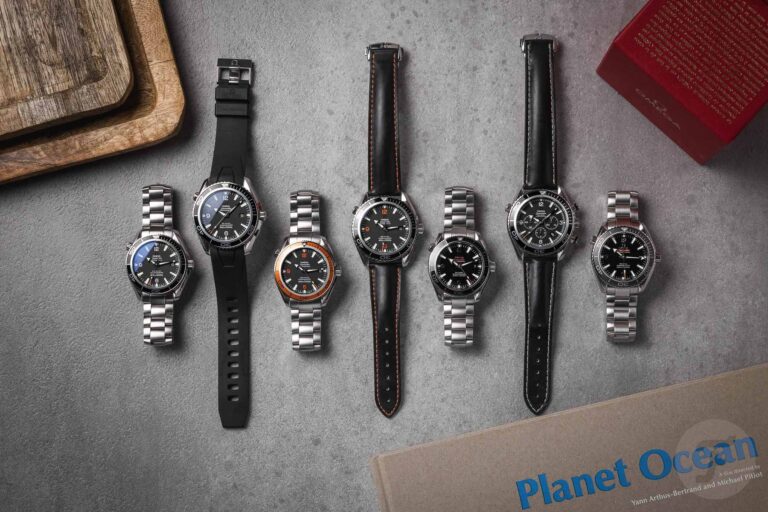The Seamaster Planet Ocean is an often overlooked collection in Omega’s catalogue, perhaps lacking the legend of the Speedmaster or the universal appeal of the Seamaster Diver 300M. However, there are some true gems in the Planet Ocean line-up, and we felt it was time to look back through the different generations and write a compact buying guide.
Omega is known for releasing many versions and sometimes special editions of their watches, and the Planet Ocean is no exception, so let me start by admitting that what follows is far from a complete overview. Still, it should provide some context and perspective on Omega’s “serious” dive watches.
The origins and inspiration of the Seamaster Planet Ocean
The history of the Omega Seamaster dates back to 1948. With the famous triple release in 1957 of the Speedmaster, Railmaster, and new Seamaster 300 (ref. CK2913), the watch acquired the quintessential dive watch form factor.
In 1964, new versions, reference 165.024 (no date) and 166.024 (date), were introduced. The diameter increased from 39 to 42 mm and the distinctive lyra lug case was adopted. This new generation became the Royal Navy’s diver’s watch and remained in production until around 1970.


Image: Amsterdam Watch Company
The 1964-1970 models are often cited as the inspiration for the Planet Ocean. However, upon closer inspection, the watch bears strong looks from both earlier generations of Seamaster Divers. The CK2913 featured a split bezel style that was half bare, half colored, and arrow hands. The arrow hands were replaced by two arrow hands on the Planet Ocean, a controversial feature as the difference between the two is not immediately discernible. The second generation adopted the Lyra lug case and dial layout. It’s no exaggeration to say that the Planet Ocean made its lineage very clear when it was introduced in 2005.
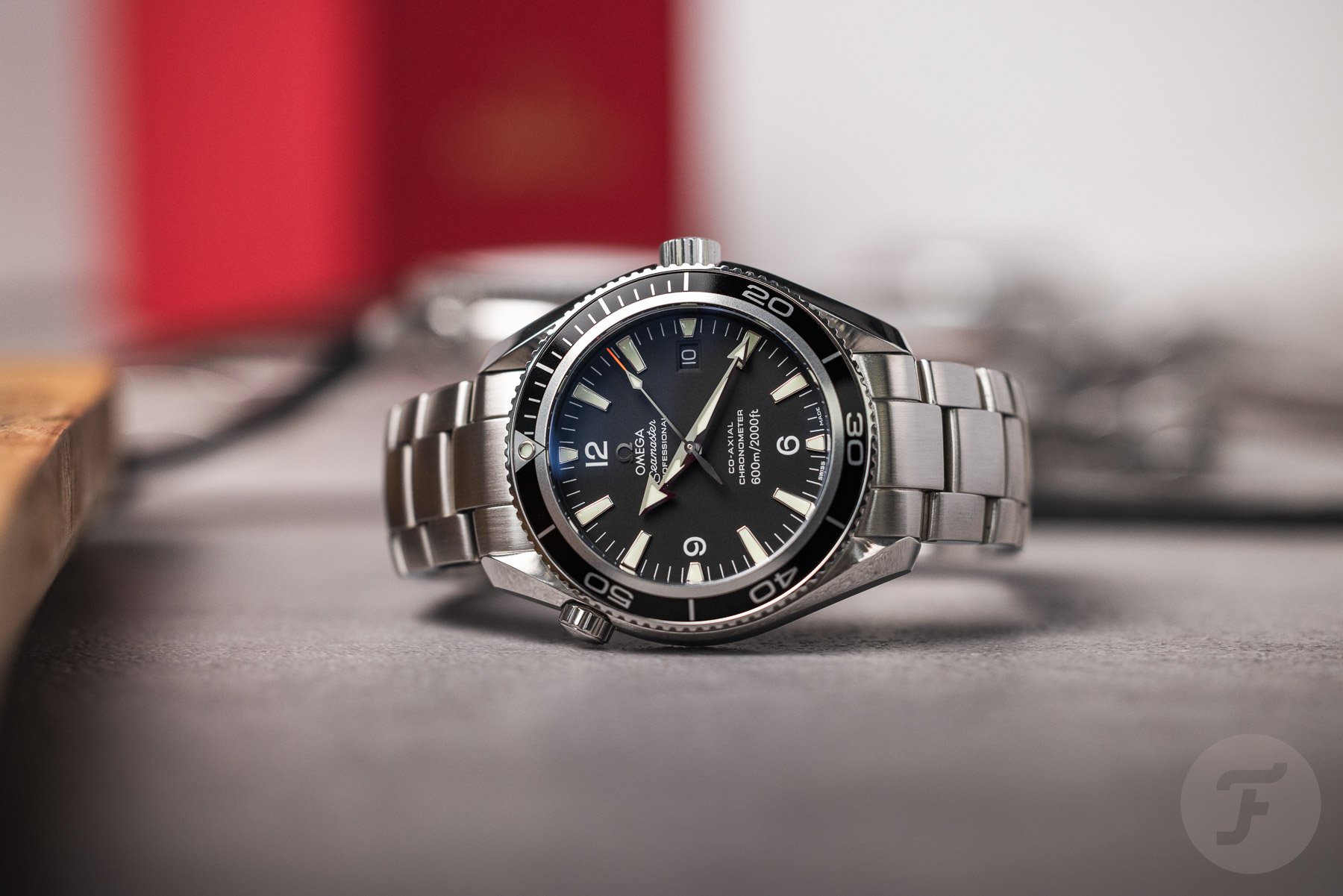
First Planet Ocean: 2005
As mentioned above, Omega introduced the Planet Ocean in 2005. This watch was positioned alongside the Seamaster Professional 300M as a more serious diver’s watch, highlighted by its 600m water resistance. The watch was available in two sizes: 42mm and 45.5mm. Buyers could choose between a leather or rubber strap, or a specially designed bracelet with a distinctive curved surface.


The first Planet Ocean was fitted with the third generation (C version) Omega Caliber 2500, which is essentially an ETA 2892-A2 movement but upgraded with Omega’s Co-Axial escapement. One of its big advantages is its low profile, which allowed the overall thickness of the 42mm Planet Ocean to be kept down to a relatively manageable 14.5mm. That’s still pretty thick, and unfortunately, later generations have gotten even thicker.
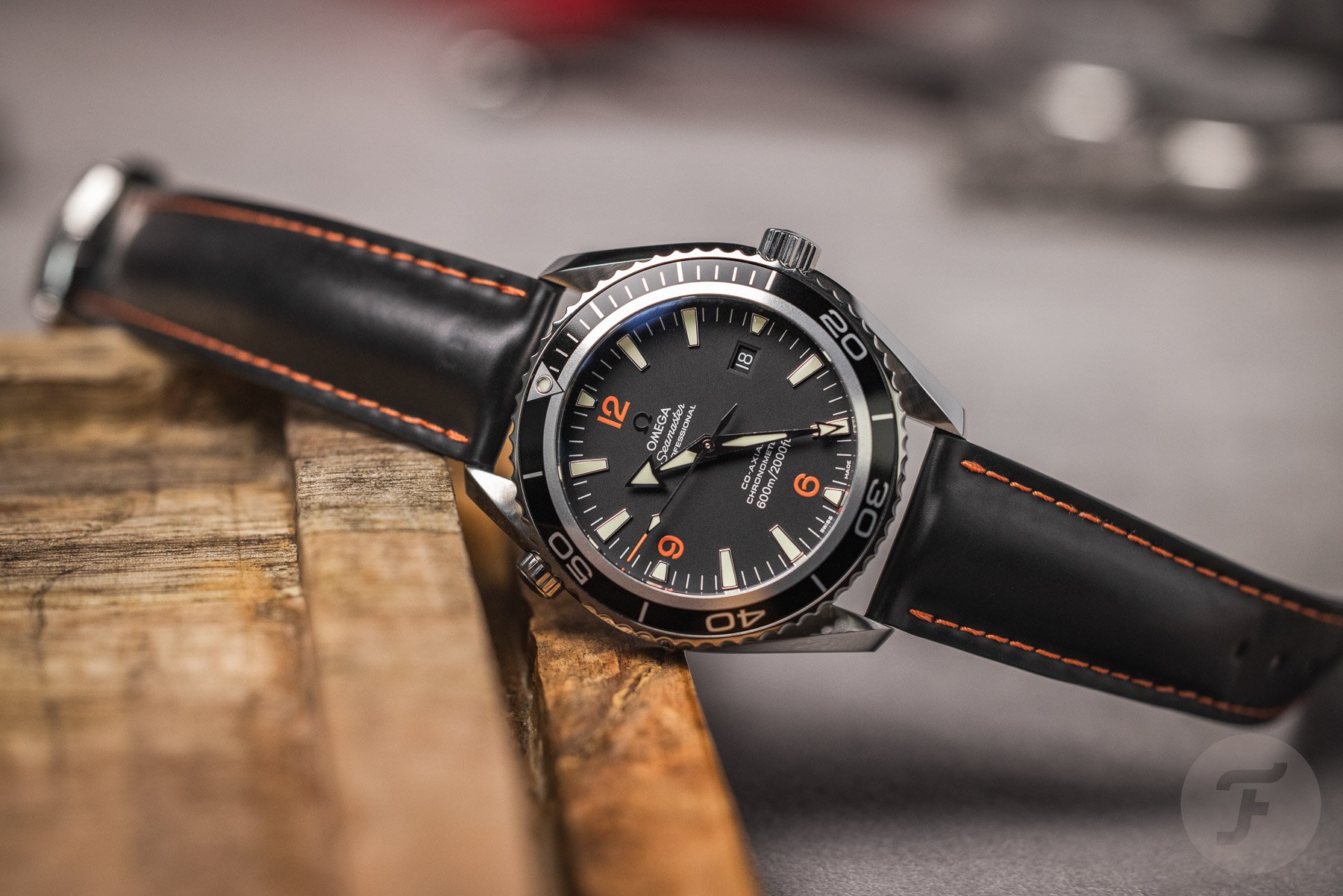
The original model was a typical sports watch of its time: a beautiful matte black dial with the only decoration being the indices and logo. The Omega name and the numbers 6, 9, and 12 were printed on it. The bezel insert was made from aluminum and had a distinctive two-thirds black, one-third silver split. Alternatively, you could opt for a version with an orange bezel.
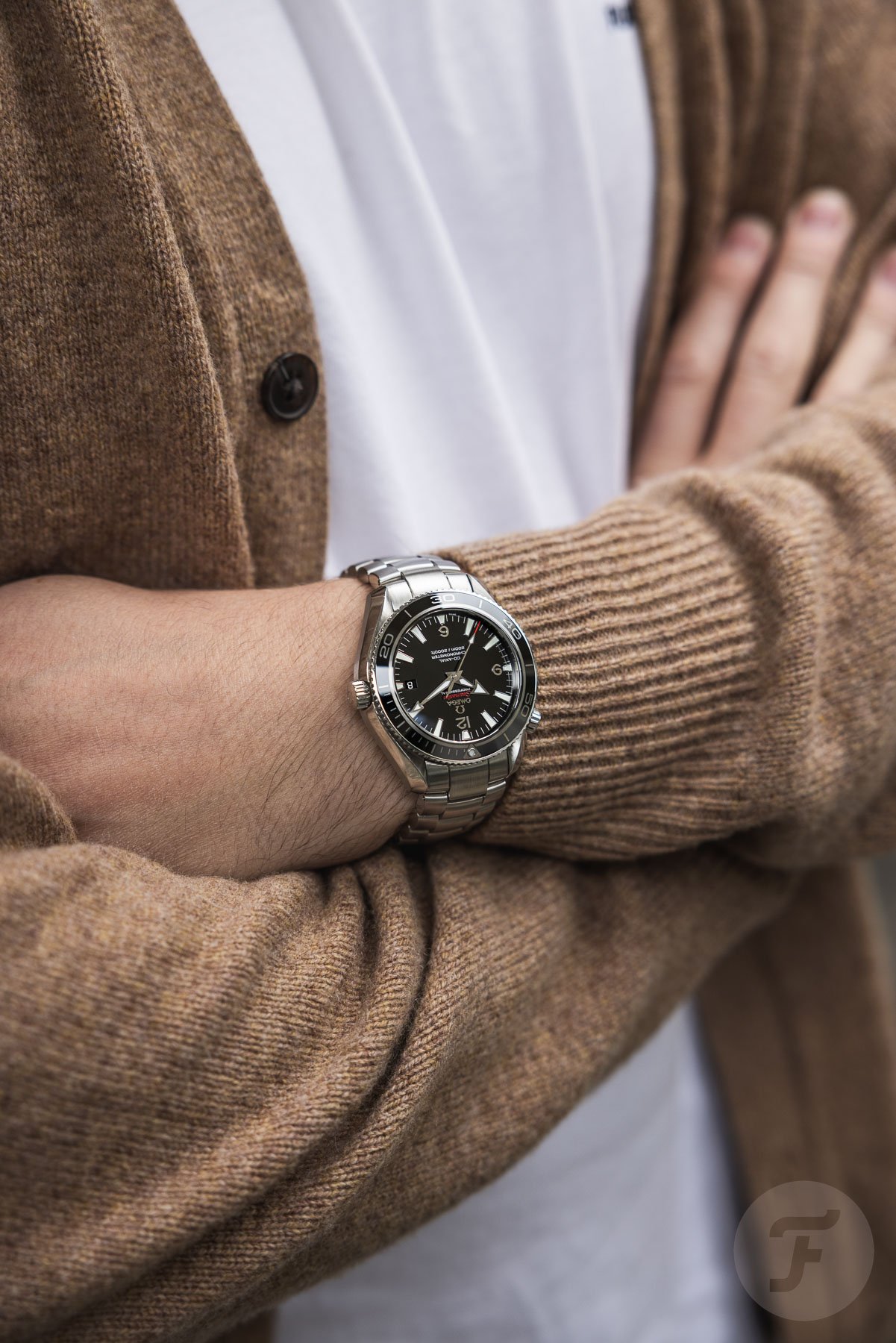
Changing Planetary Oceans: 2009
There were many versions of the original model, but it wasn’t until 2009 that it received a major update. This was when Omega introduced Liquidmetal. This technology made it possible to force a special titanium alloy into a ceramic cavity. The result was a perfectly smooth ceramic bezel insert and flat inlay metal markings. The technology was first used on the 2009 Planet Ocean ref. 222.30.42.20.01.001, which was limited to 1,948 pieces, in honor of the year the Seamaster debuted.
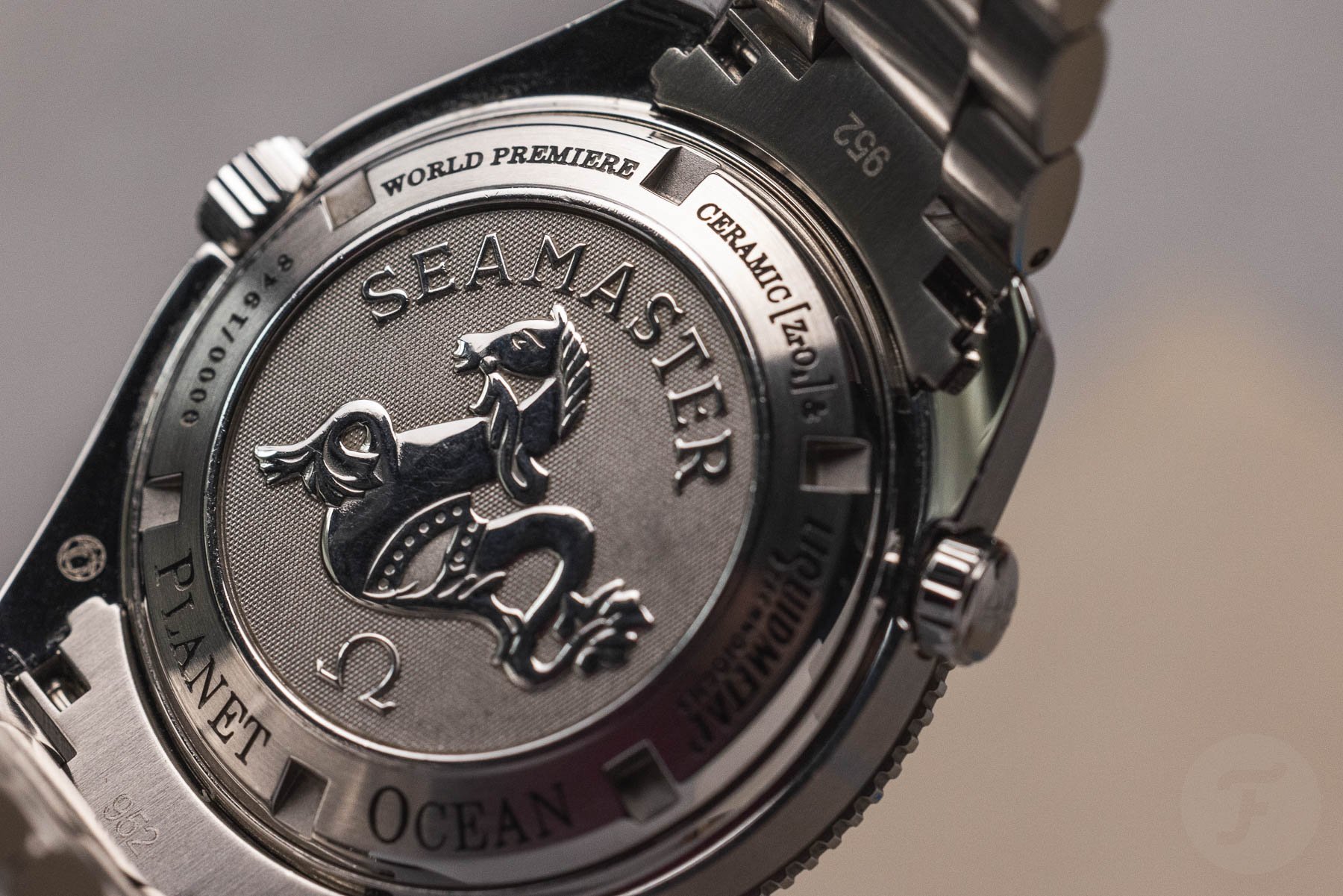
Another first is the use of an entirely ZrO2 ceramic dial (highlighted by the engraving on the caseback), which provides an impeccably smooth, highly reflective black surface that, combined with white gold indexes and numerals, the Omega logo and wordmark, and the red “Seamaster” lettering, makes the original’s austere look far more luxurious.


Inside still ticks the Caliber 2500. Combined with the fact that it is a limited edition, this model could be considered a transitional piece. However, this model did show the future of Planet Ocean. Gone are the days of matte dials and aluminum bezels. The reference 222.30.42.20.01.001 has held its value quite well and has earned a reputation as one of the best versions of Planet Ocean. This model combines a 14.5mm thickness that will soon be lost with a modern aesthetic.

Second generation: 2011
By 2011, it was only natural that ceramic dials and bezel inserts would become established. But there were many other changes to the Planet Ocean, most notably the introduction of Omega’s caliber 8500. We won’t go into the technical details here, but the silicon balance spring, twin-barrel construction, and distinctive swirling Geneva stripes ushered in the modern era of Omega movements. The caliber was now displayed behind a sapphire case back, which unfortunately added over a millimeter to the thickness of the watch.
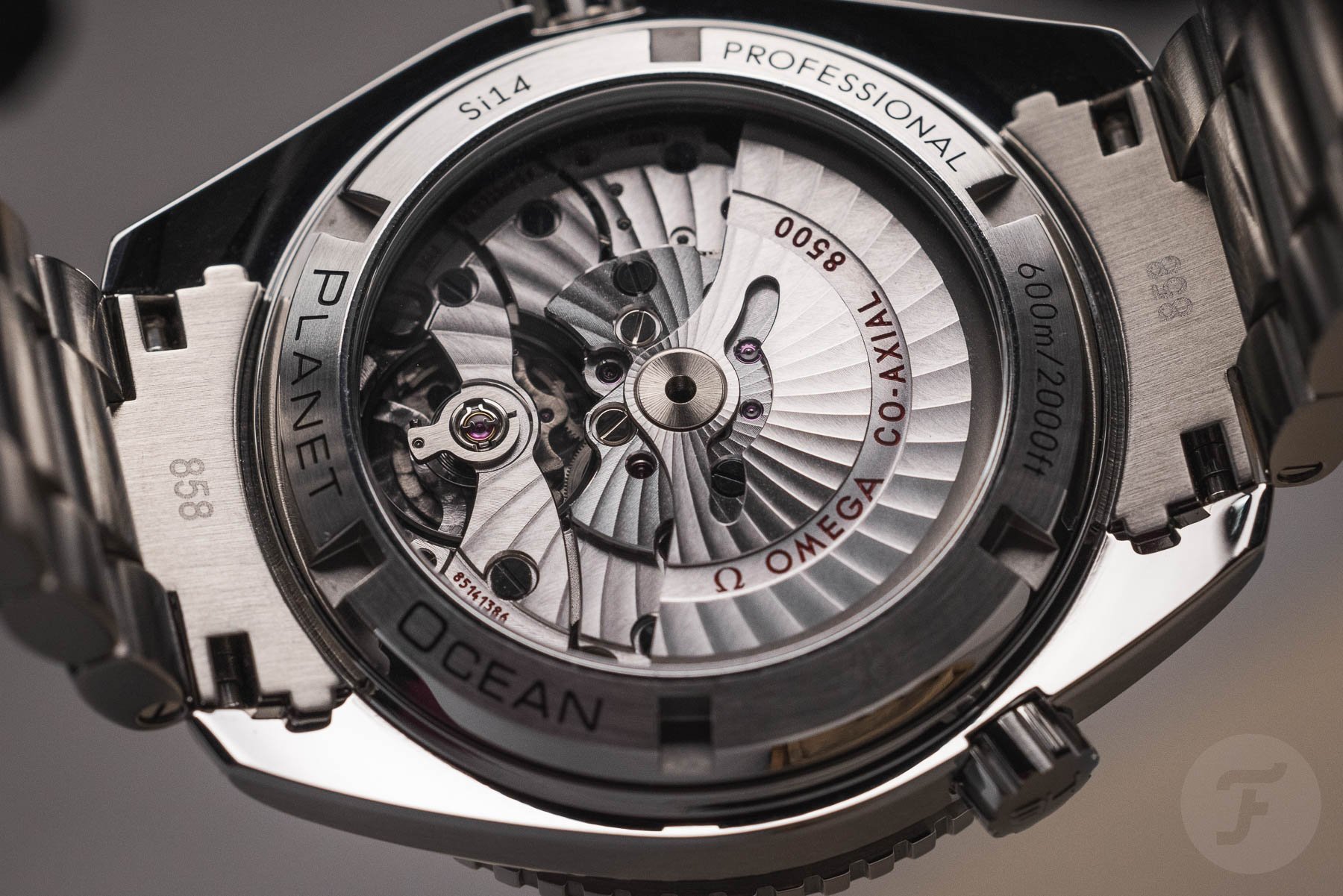
The second generation Planet Ocean added more options to the lineup: a blue and white version was introduced, as well as a 37.5mm version marketed as a women’s size. The “Seamaster” signature on the dial now appears in orange instead of white.
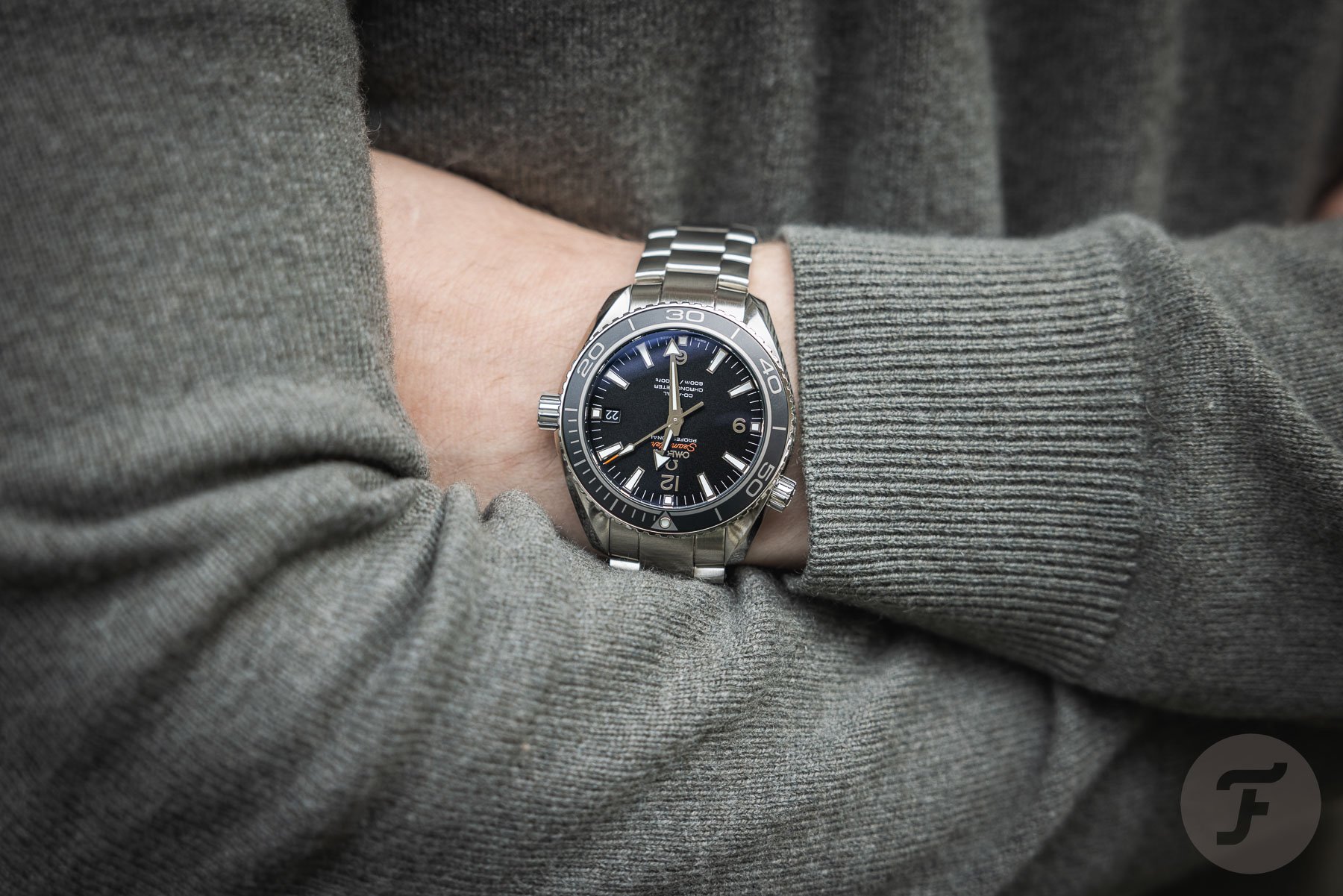
There have been some aesthetic improvements, such as the markers being a bit larger and the finish being more refined, and the lume on the minute hand and bezel pip now glows green to contrast with the blue of the rest of the watch.
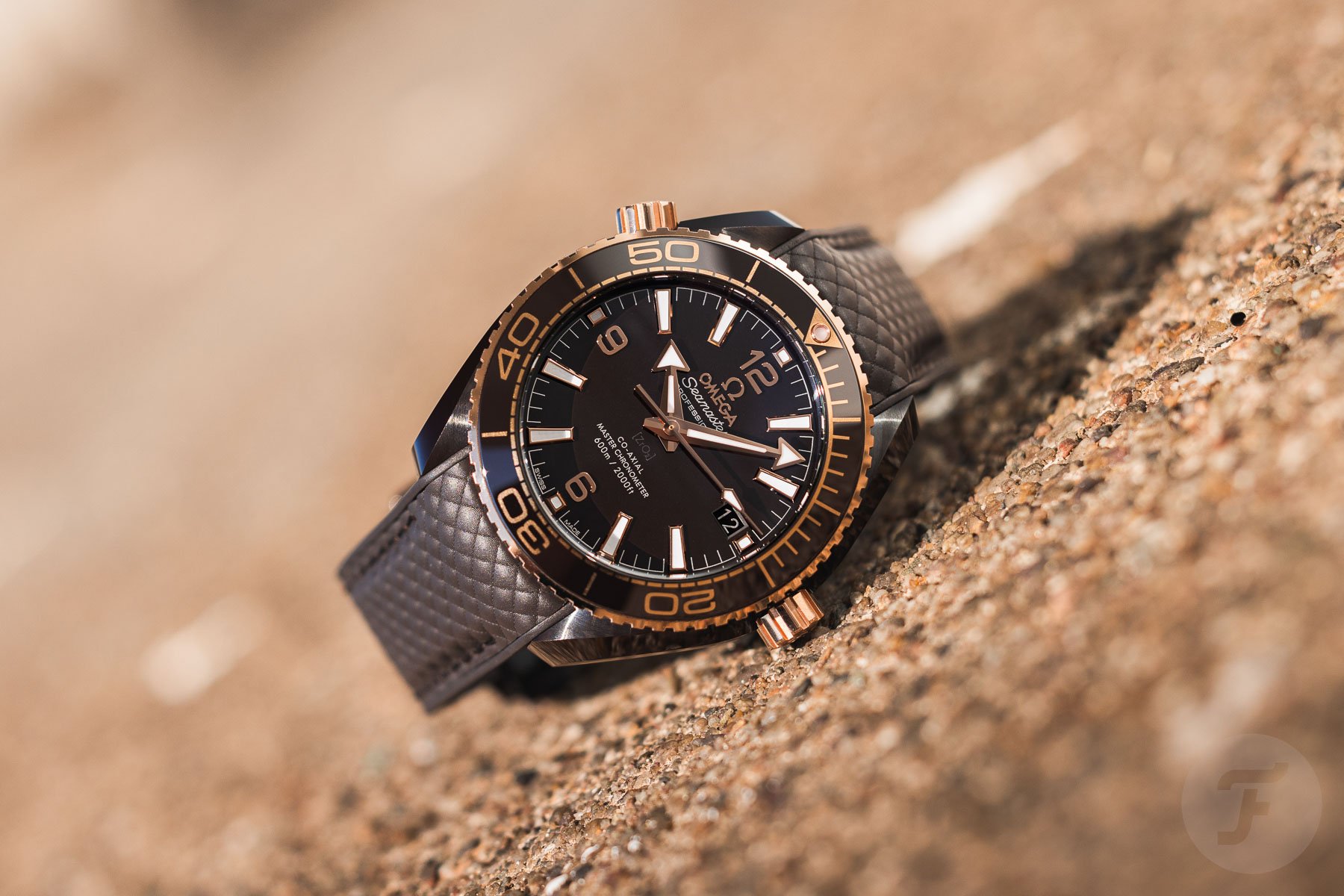
Third Generation Planet Ocean: 2016
Planet Ocean’s final major overhaul came in 2016, when the three size options (37.5, 42, 45.5) were replaced with 39.5 x 14.5mm and 43.5 x 16.5mm sizes for all models except for a few special editions.
But the biggest change is the METAS Master Chronometer certification. Technically, the old caliber 8500 and the new caliber 8900 (or 8800 for the 39.5mm version) are very similar, but there are some cosmetic differences, the most crucial of which is the METAS certification.
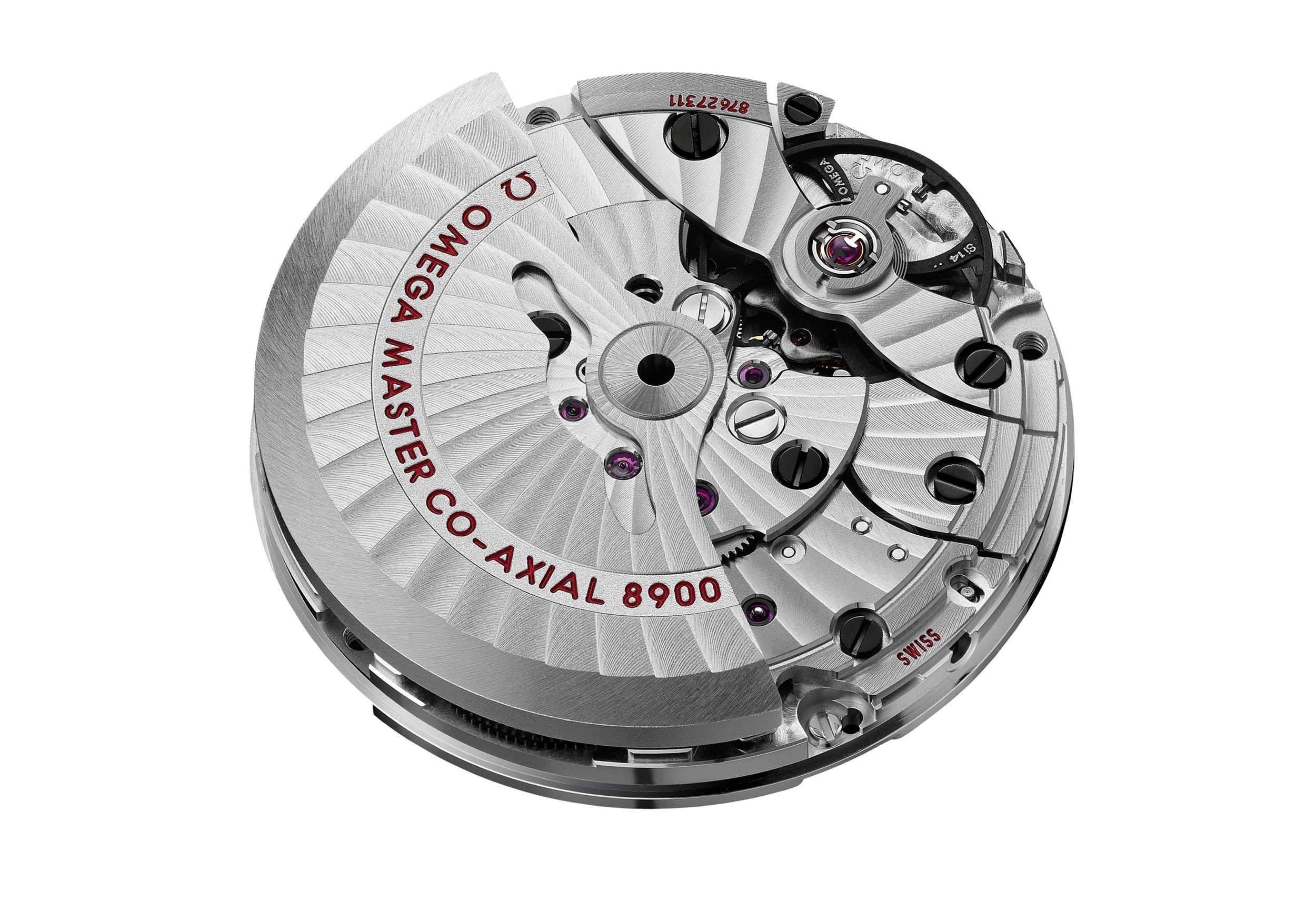
Another long-awaited feature is micro-adjustment of the fastening. Unfortunately, the advanced tool-free system is still not in use, but at least the wearer can now adjust it. Previously, they had to fiddle with full and half links that were fastened with pins and collars.
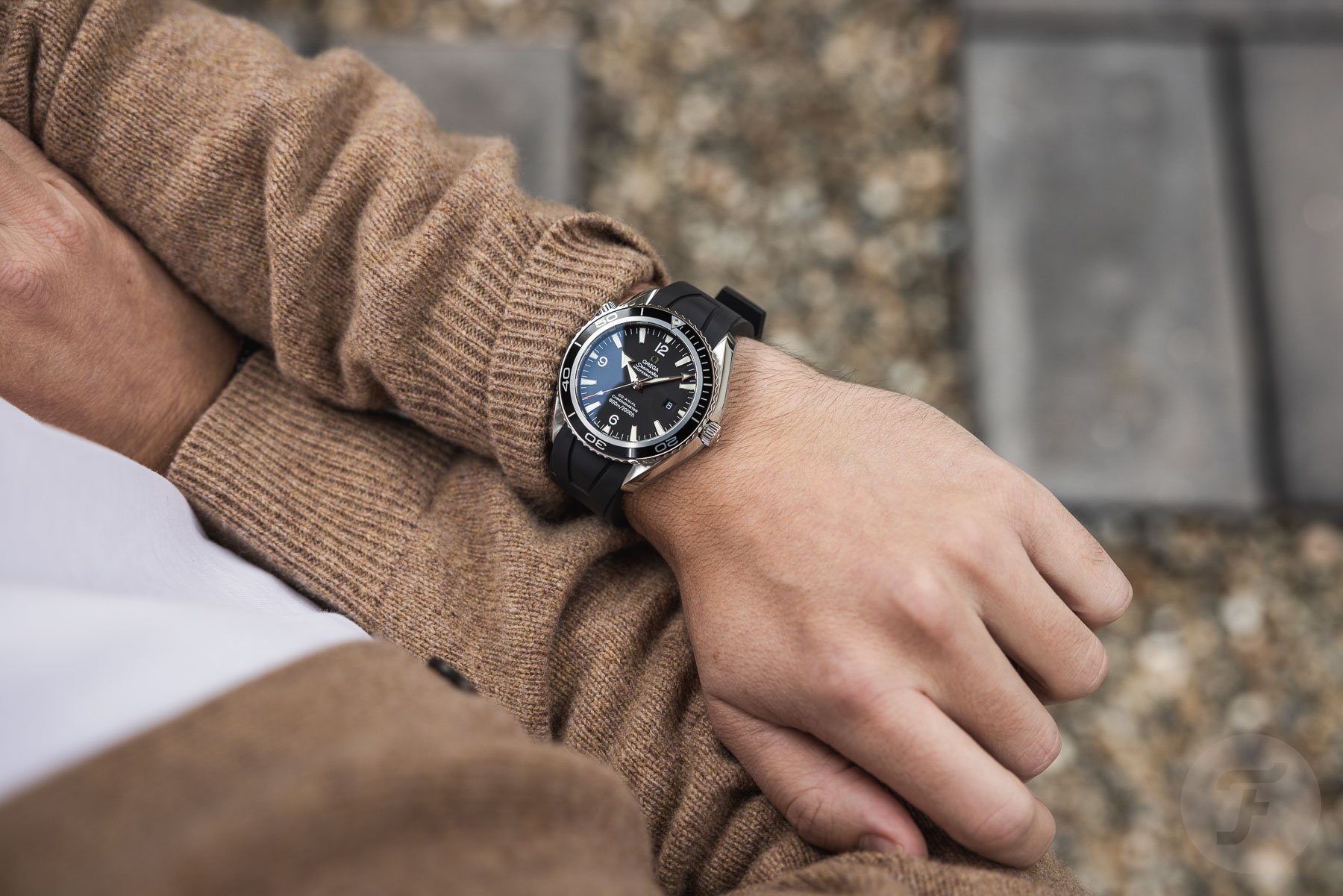
The James Bond connection
Of course, we couldn’t leave out James Bond. Planet Ocean has been inextricably linked to the film series since 2006’s Casino Royale. Bond wears a Ref. 2900.50.91 on a rubber strap in the opening scenes, before switching to a Seamaster 300M in later scenes. 2006 also saw the debut of the first co-branded Planet Ocean watch, featuring a “007” counterbalance on the seconds hand.
Bond wore Planet Ocean models in subsequent Bond films, and limited-edition co-branded editions were released in the real world, but other Seamasters were opted for over the Planet Ocean in the final two films.
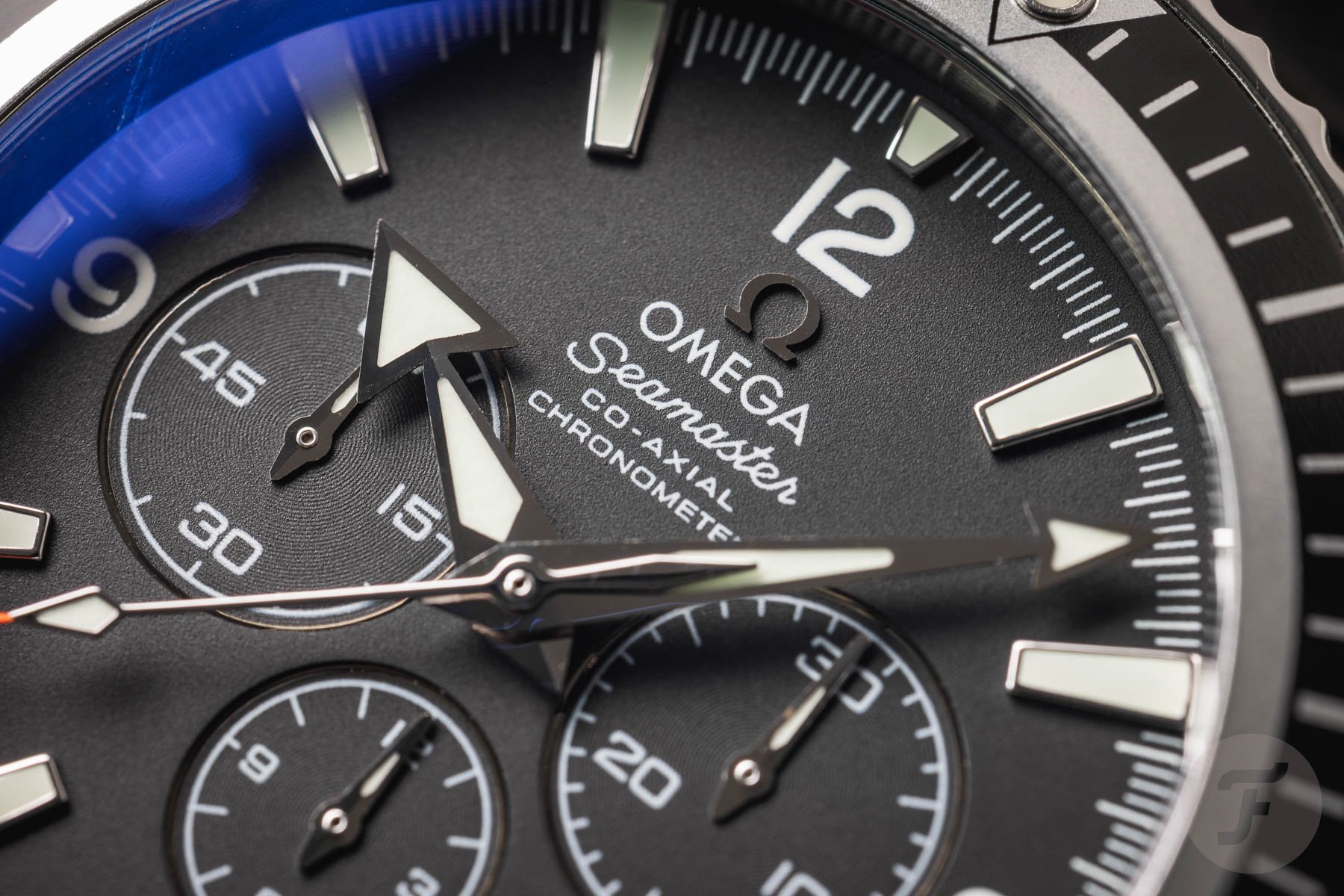
Other notable Planet Ocean variations
There have been a few other iterations of the Planet Ocean in the collection, including Omega’s chronograph version in 2006. For those who find the steel 45.5mm Planet Ocean a bit too light, a rose gold case version was introduced in 2009, with a chunky bracelet made of solid gold, of course.
The second generation also saw the introduction of the Planet Ocean GMT, which was then followed by a rather cool successor in the form of the black and white “Cookies & Cream” reference 215.33.44.22.01.001.
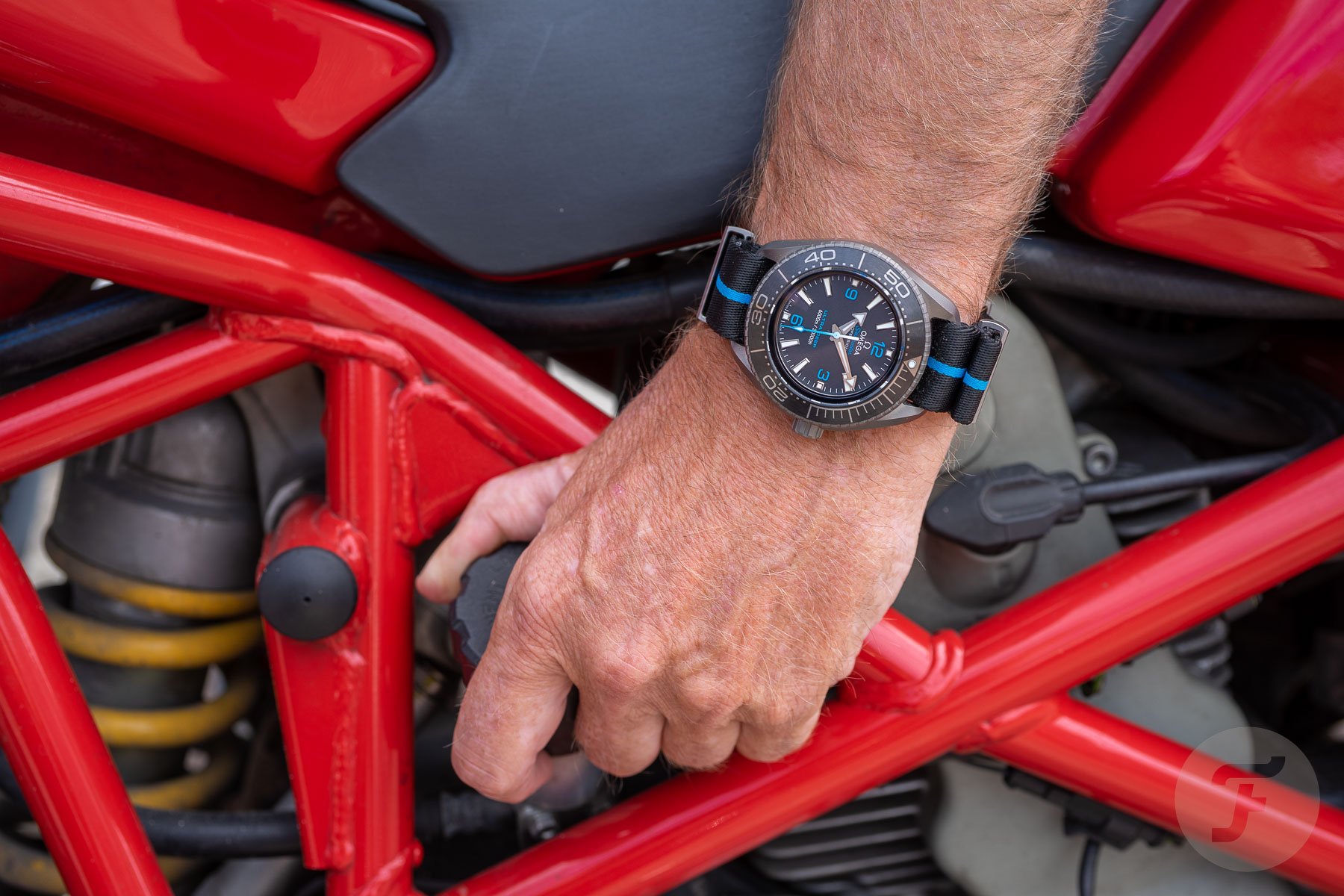
It would be foolish not to briefly mention the numerous special Olympic editions, ceramic and titanium variations, luxury jewel-adorned models, and of course the Ultra Deep. As you can see, there’s more to cover in one article, so we’ll just stick to the more basic versions.
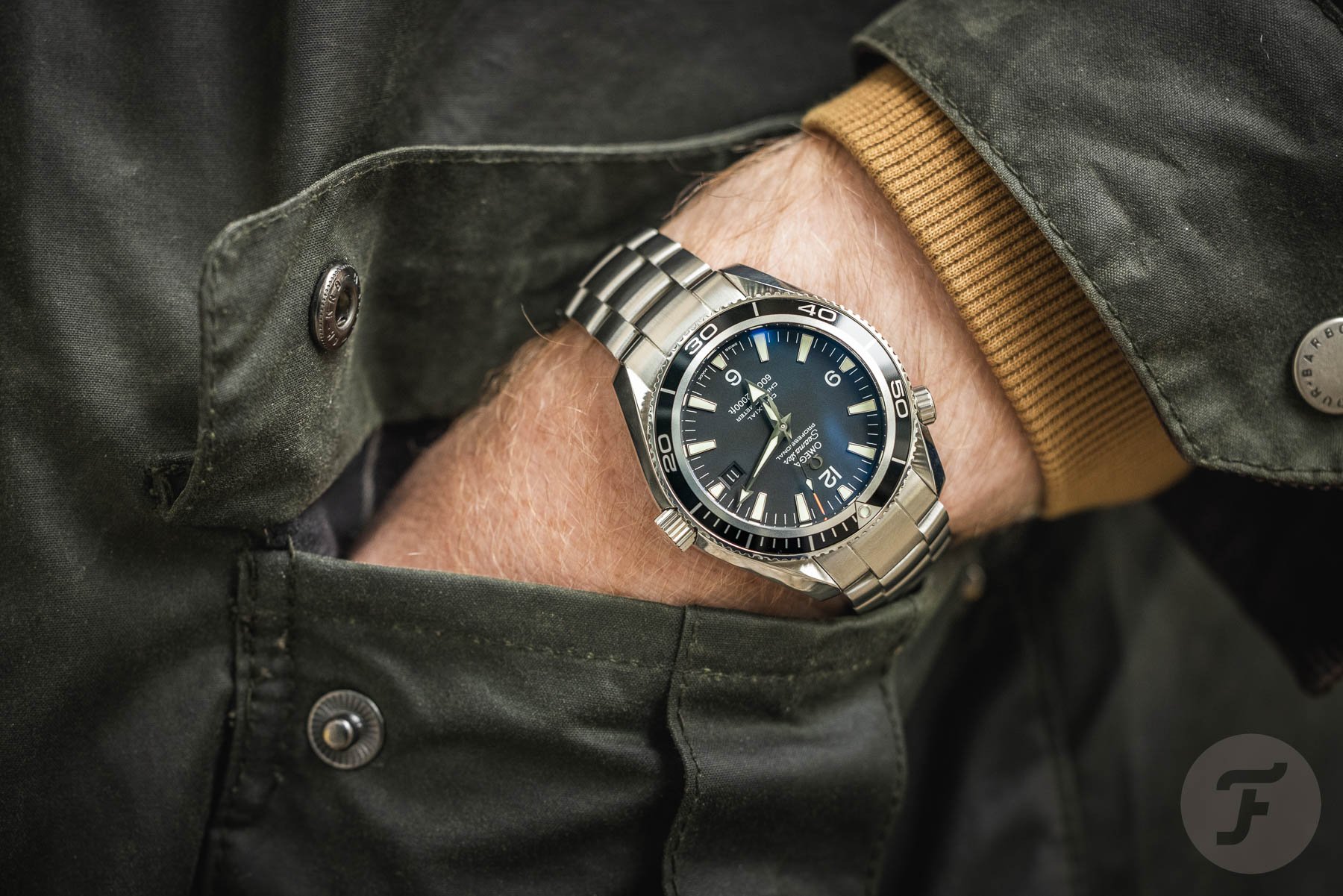
Wearing an Omega Seamaster Planet Ocean
Recently I had the chance to spend some time with some different Planet Ocean references and I have to say I’ve fallen a little in love. Admittedly, I had always dismissed PO as a bit over-engineered and just plain too big for me. Well, my dear Fratelli, I have to admit I was wrong.
I thought the original Planet Ocean in 42mm was the best. It has a muted matte look and a solid presence on the wrist. It’s too big for my 17cm wrist, but it doesn’t feel overbearing or overwhelming at all. In fact, it needs that diameter to really show off the design. I tried the current 39.5mm version and it felt too compressed and overweight to me. The design really seems to shine in the 42mm size. I definitely recommend trying it on before you judge it. You’ll probably be pleasantly surprised.
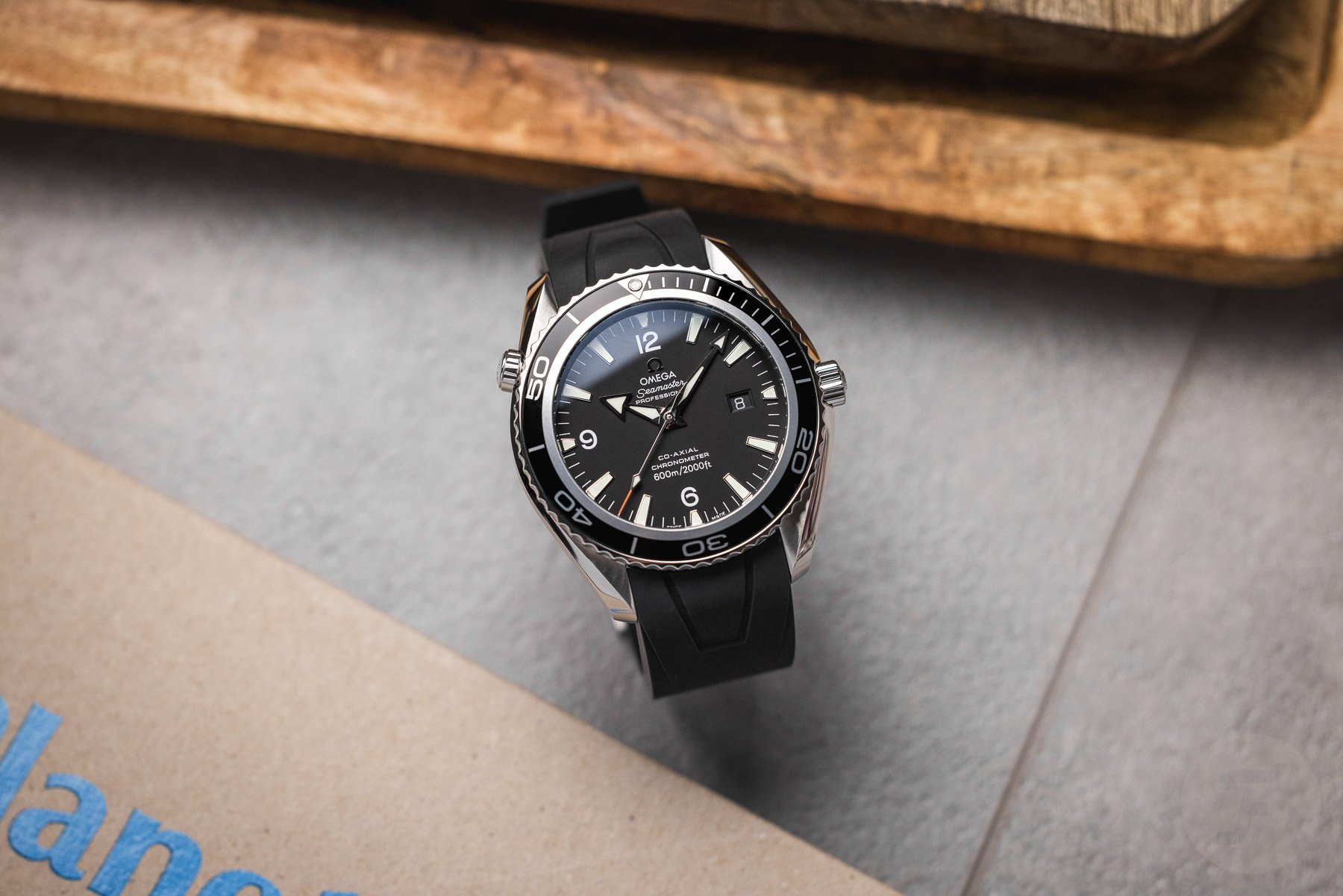
To be honest, I feel like the Planet Ocean has lost a bit of steam since its launch. All these extra features and innovations are cool, but they do dilute the personality of the watch a bit. I’d love to own a 2005 ref. 2201.50, scratch it up, and wear it hard anyway. The glossy refinements of the later models seem a bit too pricey for my taste. That said, the Planet Ocean is a very good watch overall. It’s often overlooked among the Seamaster 300M, Submariner, and Sea-Dweller, so I feel it’s a cool, off-the-beaten-path option. In fact, after researching and writing this article, I’ve added one to my hit list.
What do you think about the Omega Planet Ocean? Which one is your favorite? Let us know in the comments below!
